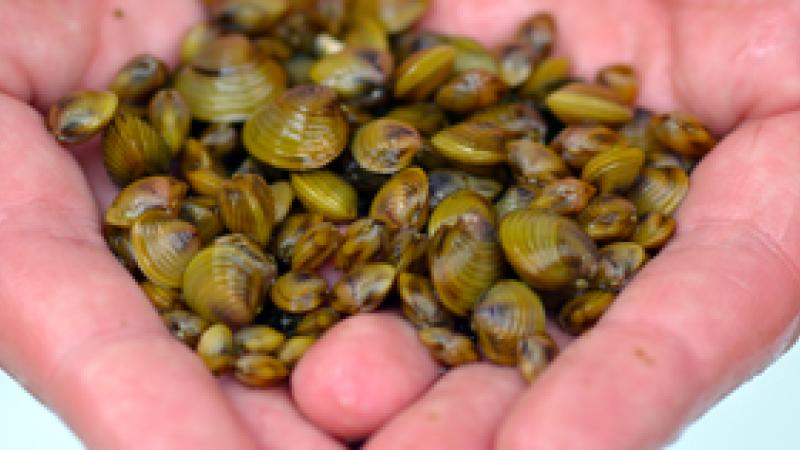December 5, 2018

[The Jefferson Project at Lake George is conducting ongoing research into how human activities may be affecting the lake. This guest blog by Kayla Coldsnow, a graduate student in the lab of Jefferson Project Director Rick Relyea, summarizes recent research published in the journal Environmental Toxicology and Chemistry. The Jefferson Project is a collaboration between Rensselaer, IBM Research, and The FUND for Lake George, founded to develop a new model for technologically enabled environmental monitoring and prediction to understand and protect the Lake George ecosystem and freshwater ecosystems around the world.]
What did you want to know?
Applications of road salt are increasing concentrations of salt in freshwater ecosystems that we use for drinking water, recreation, industry, and agriculture. It is important that we understand how plants and animals are affected by increased salt, particularly for invasive species such as Asian clams that originally evolved in environments that can range widely in saltiness. If Asian clams can survive in aquatic ecosystems with high salt concentrations, they may be able to outcompete native clams in ecosystems impacted by road salts. Although most road salt applications contain sodium chloride, some applicators use alternatives including magnesium chloride or calcium chloride As a result, we were interested in documenting the tolerance to all three road salts.
How did you go about it?
We completed two lab experiments in which we exposed Asian clams to various concentrations of each road salt for four or eight days. At the end of each experiment, we determined how many clams were alive in each salt concentration. After the experiments, we calculated the lethal concentrations that cause 50% mortality – known as LC50 values –– for each salt and time point. LC50 values are useful in comparing the relative toxicity of different pollutants.
What did you learn?
We discovered that Asian clams are extremely tolerant to all three road salts. For reference, the typical salt concentration of freshwater (including Lake George) is 0-20 mg chloride per liter (Cl/L), while seawater is approximately 20,000 mg Cl/L. In comparison, the LC50 values for magnesium chloride and calcium chloride were approximately 1,800 and 3,600 mg Cl/L across the two experiments. For sodium chloride, the LC50 value (22,000 mg Cl/L) was higher than seawater in the 4-day experiment and still very high (10,000 mg Cl/L) in the 8-day experiment. Such strikingly high tolerance to all three salts may reflect the fact the Asian clams come from environments in Asia that range from fresh water to brackish water. This high tolerance to salt should allow Asian clams to invade and survive in a wide range of habitats around the world, including lakes, rivers, and estuaries. Moreover, the high salt tolerance of Asian clams may allow them to outcompete native clams and mussels in ecosystems contaminated with high concentrations of road salts.
The research, titled “Toxicity of various road‐deicing salts to Asian clams (Corbicula fluminea),” can be found at doi: 10.1002/etc.4126
